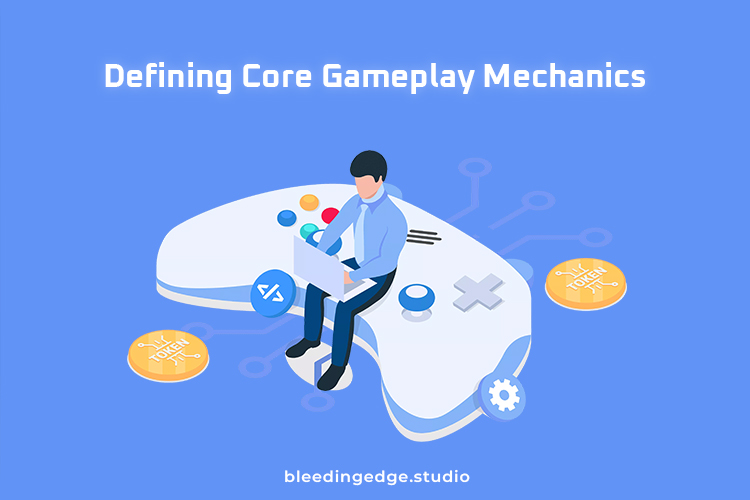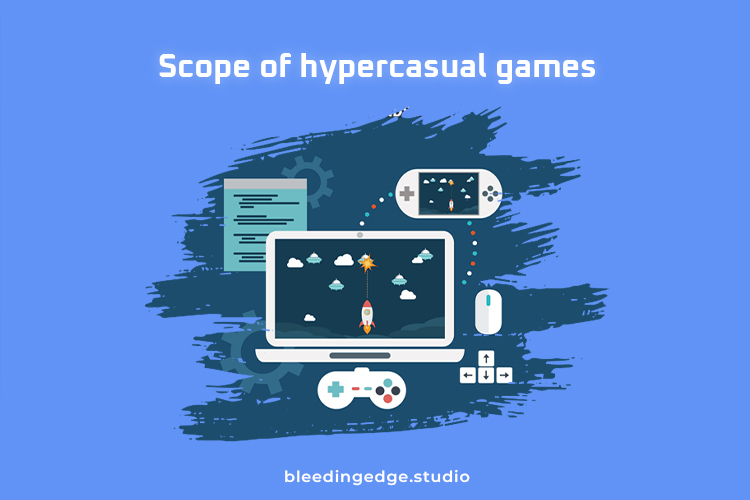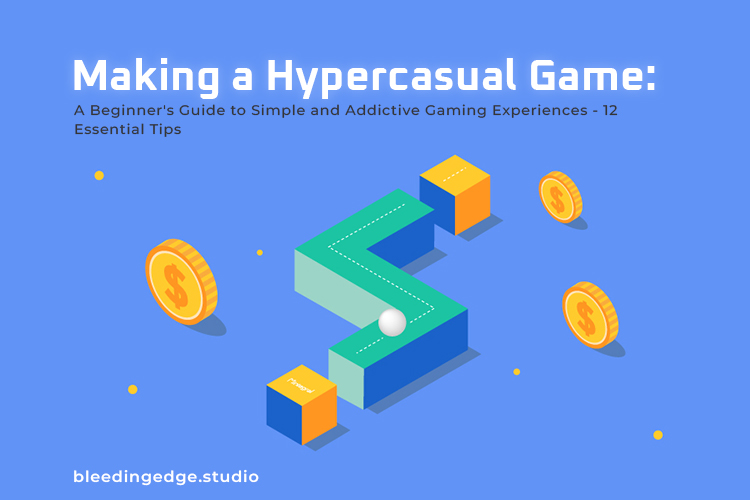Making a Hypercasual Game: A Beginner’s Guide to Simple and Addictive Gaming Experiences
Introduction
Hypercasual games have taken the mobile gaming industry by storm in recent years. These simple, addictive games have captivated millions of players worldwide and have become a lucrative opportunity for game developers and designers. You’re lucky if you’ve ever wondered about creating your hypercasual game! In this blog post, we’ll guide you through making a hypercasual game, from ideation to development and launch. So, let’s dive in!
Understanding Hypercasual Games
Before creating a hypercasual game, it’s essential to understand the genre. Hypercasual games are characterized by their minimalistic design, easy-to-learn mechanics, and addictive gameplay. They typically involve simple interactions and offer short play sessions, allowing players to enjoy quick bursts of entertainment. Examples of popular hypercasual games include Flappy Bird, Fruit Ninja, and Doodle Jump.
Ideation and Concept Development
Creating a unique and engaging concept is the first step in creating a hypercasual game. Consider brainstorming game mechanics, visual styles, and simple yet captivating themes. Look for inspiration in your surroundings, everyday objects, or classic games. It’s crucial to keep your concept minimalistic and accessible to a wide audience.
Defining Core Gameplay Mechanics

Once you have a concept, focus on defining the core gameplay mechanics. Hypercasual games often feature one or two simple actions, such as tapping, swiping, or dragging, forming the basis of the gameplay experience. The mechanics should be intuitive and easy to understand, allowing players to jump right into the game without a steep learning curve.
Prototyping and Testing
With your concept and core mechanics established, it’s time to create a prototype of your hypercasual game. Start with a basic version that showcases the core gameplay loop. Use simple graphics and placeholders to test the mechanics and gather feedback. Iteration is key at this stage, so be open to making changes and refining your game based on user testing and feedback.
Level Design and Progression
Hypercasual games often rely on simple progression systems to keep players engaged. Consider implementing levels or stages that gradually increase in difficulty. It’s important to balance providing a challenge and ensuring the game remains accessible and enjoyable. Experiment with level design and pacing to create a sense of accomplishment and motivation for players.
Visual Design and Sound Effects
While hypercasual games are known for their minimalistic design, aesthetics play a vital role in capturing players’ attention. Create visually appealing graphics with vibrant colors, clean lines, and catchy animations. Strive for consistency in your visual style and ensure the graphics complement the gameplay. Additionally, incorporate engaging sound effects and simple background music to enhance the overall experience.
Monetization Strategies
Considering the potential revenue from your hypercasual game is essential. One popular monetization strategy for hypercasual games is integrating non-intrusive ads that players can optionally watch to earn in-game rewards. Another strategy is incorporating in-app purchases for cosmetic items or additional gameplay features. Carefully choose the right monetization model that fits your game and balances player enjoyment and revenue generation.
User Acquisition and Marketing
Creating a great hypercasual game is just the first step. It would help to have a solid user acquisition and marketing strategy to attract a substantial player base. Leverage social media platforms, online communities, and app review websites to promote your game. Engage with potential players, create enticing promotional materials, and consider collaborating with influencers or other developers to reach a wider audience.
Launching and Launching and Post-Launch Support
Once your hypercasual game is released, it’s time to launch it on the desired app stores. Follow the submission guidelines and requirements of the respective platforms (such as the Apple App Store and Google Play Store) to ensure a smooth release. Monitor user feedback and reviews after the launch, and be responsive to bug reports or improvement suggestions. Regular updates and bug fixes are essential to keep players engaged and maintain a positive user experience.
Analytics and Data-driven Optimization
To maximize your hypercasual game’s success, gathering and analyzing data related to user behavior and gameplay metrics is crucial. Utilize analytics tools and track key performance indicators (KPIs) such as retention rate, session length, and conversion rates. Analyzing this data will help you identify areas of improvement, understand player preferences, and make informed decisions for future updates and iterations of your game.
Building a Community and Engaging with Players
Fostering a community around your hypercasual game can greatly contribute to its success. Encourage players to share their experiences, provide feedback, and interact with each other through social media platforms, in-game chat, or dedicated forums. Engage with your community regularly by hosting contests and events or releasing special updates to keep players invested and loyal.
Scaling and Iterating
As your hypercasual game gains popularity and attracts a substantial player base, consider scaling the game and expanding its content. This could involve adding new levels, introducing different game modes, or incorporating additional features to maintain player interest. Regular updates and iterations will keep the game fresh, attract new players, and provide a continuous revenue stream.
Scope of hypercasual Games:

The scope of hypercasual games has expanded significantly in recent years, making it a promising field for game developers and designers. Here are some key aspects that highlight the scope and potential of hypercasual games:
Broad Audience Appeal: Hypercasual games have a wide appeal, attracting casual and hardcore gamers looking for quick and enjoyable experiences. Their simple mechanics and easy-to-learn gameplay make them accessible to players of all ages and gaming backgrounds.
Mobile Gaming Dominance: Hypercasual games have found their sweet spot in the market. With the widespread availability of smartphones and tablets, people can easily access and play these games on the go. Mobile platforms provide a fertile ground for hypercasual games to thrive and reach a massive audience.
Lower Development Costs: Compared to complex and high-budget games, the development costs for hypercasual games are generally lower. Focusing on minimalistic design, straightforward mechanics, and shorter development cycles allows for quicker production and iteration. This lowers the barrier to entry for developers, making it an appealing option for both indie developers and established studios.
Rapid Iteration and Experimentation: Hypercasual games encourage a culture of rapid iteration and experimentation. Developers can quickly test ideas, mechanics, and graphics to gauge player interest and make necessary adjustments. This iterative approach allows continuous improvement and refinement, increasing the chances of creating a successful game.
Monetization Opportunities: Hypercasual games offer various monetization models that can generate revenue for developers. These include in-app advertisements, rewarded videos, and purchases for cosmetic items or additional features. With a large player base and high engagement levels, hypercasual games have the potential to generate significant revenue through well-implemented monetization strategies.
Virality and Social Sharing: Hypercasual games often have an addictive quality that encourages players to share their experiences with friends and family. The simple mechanics and short gameplay sessions make them highly shareable on social media platforms. This viral potential can lead to exponential growth and increased visibility for the game, further expanding its scope.
Opportunities for Innovation: Despite their simplicity, hypercasual games allow for innovation in various aspects, such as gameplay mechanics, visual design, and the creative use of new technologies. Developers can experiment with unique twists on established mechanics or explore novel ideas to stand out in the hyper-competitive mobile gaming market.
Cross-promotion and Franchise Building: Successful hypercasual games often provide opportunities for cross-promotion within a developer’s portfolio. Once a game gains popularity, developers can leverage its success to promote other games they have developed or plan to release. Building a franchise around a hypercasual game can create a loyal player base and further extend the scope of the brand.
Integration with Emerging Technologies: Hypercasual games can use emerging technologies, such as augmented reality (AR) or virtual reality (VR), to enhance the gameplay experience. By embracing these technologies, developers can create unique and immersive hypercasual experiences that engage players on a deeper level.
In summary, the scope of hypercasual games is vast and continues to grow. With their broad appeal, lower development costs, and potential for high engagement and revenue generation, hypercasual games offer an exciting opportunity for developers to create simple yet addictive gaming experiences that captivate millions of players worldwide.
Learn hypercasual Game Development:

To learn hypercasual game development, there are several key requirements and skills you should focus on. Here’s a list of the essential requirements to get started:
Basic Programming Knowledge: Familiarize yourself with programming languages commonly used in game development, such as C#, JavaScript, or Python. Understanding programming concepts like variables, functions, loops, and conditional statements is crucial for implementing game mechanics and logic.
Game Development Engines: Choose a game development engine that suits your needs and learning goals. Unity and Unreal Engine are popular choices for creating hypercasual games. Learn the basics of the chosen engine, including how to set up projects, work with assets, implement scripts, and build for different platforms.
Game Design Principles: Understand fundamental game design principles, including player engagement, flow, pacing, and feedback. Study the mechanics, level design, and progression systems of successful hypercasual games to learn what makes them addictive and enjoyable.
Graphic Design Skills: While hypercasual games often have minimalistic visuals, having some graphic design skills can be beneficial. Learn how to create simple and appealing graphics, use color effectively, and create animations or visual effects to enhance the gameplay experience. Tools like Adobe Photoshop or Illustrator can be valuable for creating game assets.
User Interface (UI) and User Experience (UX) Design: Hypercasual games typically have straightforward and intuitive user interfaces. Learn the principles of designing user-friendly interfaces, including button placement, clarity of information, and responsive touch controls. Ensure the user experience is smooth, engaging, and easy to navigate.
Mobile Game Development: Hypercasual games are primarily played on mobile devices, so understanding the intricacies of mobile game development is important. Learn about mobile-specific considerations like touch controls, screen resolutions, aspect ratios, and optimization techniques for performance and memory usage.
Prototyping and Iteration: Practice prototyping game ideas quickly to test and refine gameplay mechanics. Understand the importance of iteration based on user feedback and playtesting. This iterative process will help you fine-tune your hypercasual game and make it more enjoyable for players.
Monetization Strategies: Study different monetization strategies used in hypercasual games, such as integrating advertisements, in-app purchases, or rewarded videos. Learn how to implement these strategies effectively while maintaining a positive user experience and maximizing revenue potential.
Analytics and Data-driven Optimization: Familiarize yourself with game analytics tools to track and analyze player behavior, engagement metrics, and revenue generation. Learn how to interpret data and make informed decisions to optimize your game’s performance and enhance monetization potential.
Continuous Learning and Keeping up with Trends: The game development industry is constantly evolving, so it’s essential to stay updated with the latest trends, technologies, and best practices. Follow industry blogs, join game development communities, and participate in online forums to stay connected with the latest hypercasual development developments.
Remember, learning hypercasual game development is an ongoing process. Practice regularly, experiment with different ideas, and seek feedback from other developers and players to improve your skills and create compelling hypercasual gaming experiences.
Top Hypercasual Games: that Have Gained Popularity:

The hypercasual game genre has seen many successful titles over the years. Here are some of the top hypercasual games that have gained popularity:
Flappy Bird: Flappy Bird became a viral sensation when it was released in 2013. The game involved tapping a bird through a series of pipes to make it fly higher. It is simple mechanics, and addictive nature made it a massive hit.
Subway Surfers: Subway Surfers, developed by Kiloo, is an endless runner game with tremendous success. Players control characters who run along subway tracks, collecting coins and avoiding obstacles. Its vibrant visuals, catchy music, and regular updates have contributed to its longevity.
Temple Run: Temple Run, developed by Imangi Studios, is another highly popular endless runner game. Players navigate through a temple, avoiding obstacles and collecting coins. Its simple swipe controls and exhilarating gameplay became a global phenomenon.
Fruit Ninja: Fruit Ninja, created by Halfbrick Studios, challenges players to slice fruit using swipe gestures. It quickly gained popularity due to its satisfying gameplay, vibrant visuals, and addictive nature. Fruit Ninja also pioneered the “fruit slashing” mechanic seen in many subsequent hypercasual games.
Crossy Road: Crossy Road, developed by Hipster Whale, is a modern take on the classic Frogger game. Players guide a character across roads, rivers, and train tracks, avoiding obstacles. Its charming pixel art style, endless gameplay, and collectible characters resonated with players worldwide.
Color Switch: Color Switch, developed by Fortafy Games, is a color-based puzzle game. Players must navigate a ball through obstacles of different colors, and the ball can only pass through shapes of the same color. Its challenging yet addictive gameplay made it a hit.
Dune!: Dune! is a simple and addictive game developed by Voodoo. Players control a ball that jumps from one dune to another, trying to go as far as possible. Its minimalistic graphics, one-tap controls, and high-score chasing mechanics appealed to a wide audience.
Stack: Stack, created by Ketchapp, is a game that involves stacking blocks as high as possible. Players must tap to align the blocks and create a tower correctly. Its clean design, challenging gameplay, and addictive nature made it a favorite among hypercasual game enthusiasts.
Helix Jump: Helix Jump, developed by Voodoo, is a vertical platformer game. Players guide a ball through a helix tower, avoiding obstacles and trying to reach the bottom. Its vibrant colors, engaging gameplay, and simple controls have made it a popular choice for quick gaming sessions.
Paper.io: Paper.io, developed by Voodoo, is a multiplayer territory capture game. Players control a colored square and try to expand their territory while avoiding other players. Its competitive gameplay, easy-to-understand mechanics, and multiplayer aspect attracted a large player base.
These are just a few examples of the top hypercasual games that have significantly impacted the industry. Each game brings its unique twist to the genre, captivating players with addictive gameplay, simple mechanics, and appealing visuals.
Conclusion
Hypercasual games offer a great entry point into mobile gaming, providing simple and addictive experiences for beginners. Following these 12 essential tips can enhance your hypercasual gaming journey. Embrace the concept, learn the controls, aim for high scores, and enjoy the engaging gameplay loops. Make the most of quick gaming sessions, experiment with different titles, and focus on your reflexes and timing. Understand the monetization model, take breaks when needed, and share your achievements with others. Ultimately, remember to have fun and appreciate the simplicity and addictive nature of hypercasual games. Get ready for an exciting and enjoyable gaming experience!
In short, Creating a hypercasual game is an exciting journey that requires creativity, simplicity, and attention to detail. By understanding the genre, ideating a unique concept, defining core mechanics, prototyping, testing, and iterating, you can develop a simple and addictive gaming experience. Remember to focus on visual design, monetization strategies, user acquisition, and community engagement to enhance the game’s success. With dedication, creativity, and persistence, you can join the ranks of successful hypercasual game developers and bring your vision to millions of players worldwide. So, get started on your hypercasual game project and enjoy the process of making something truly enjoyable and captivating!

